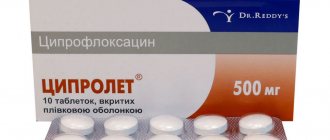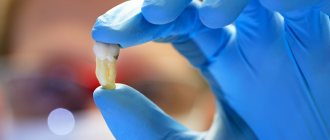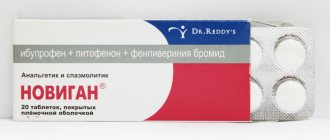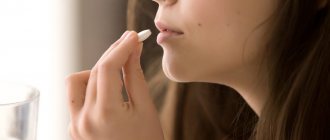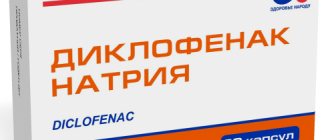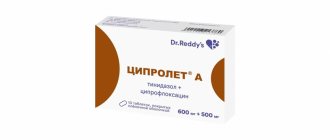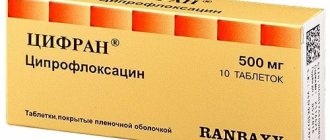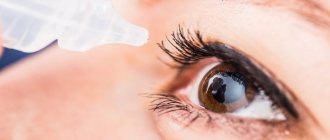Home | About us | Delivery | Advertisers | Login | Registration
Delivery on Sundays and holidays does not work!
- Medicines
- dietary supplementsVitamins
- Categories from A to Z
- Brands from A to Z
- Products from A to Z
- Medical equipment
- beauty
- Child
- Care
- Honey products appointments
- Herbs and herbal teas
- Medical nutrition
- Journey
- Making medicinesStock
Pharmacy online is the best pharmacy in Almaty, delivering medicines to Almaty. An online pharmacy or online pharmacy provides the following types of services: delivery of medicines, medicines to your home. Online pharmacy Almaty or online pharmacy Almaty delivers medicines to your home, as well as home delivery of medicines in Almaty.
my basket
Apteka84.kz is an online pharmacy that offers its customers medicines, medicinal and decorative cosmetics, dietary supplements, vitamins, baby food, intimate products for adults, medical equipment and thousands of other medical and cosmetic products at low prices. All data presented on the Apteka84.kz website is for informational purposes only and is not a substitute for professional medical care. Apteka84.kz strongly recommends that you carefully read the instructions for use contained in each package of medicines and other products. If you currently have any symptoms of the disease, you should seek help from a doctor. You should always tell your doctor or pharmacist about all the medicines you take. If you feel you need further help, please consult your local pharmacist or contact our GP online or by telephone.
© 2022 Pharmacy 84.
Antibiotic therapy for otitis media
This topic can be presented in several sections, since we should talk not only about external and otitis media, but also about acute and chronic processes in these parts of the ear, since each of these diseases requires an independent medical approach.
Unfortunately, at present, along with the successes of pharmacotherapy, social changes have occurred in society that largely reduce the effectiveness of the use of new drugs that can not only shorten the duration of acute ear disease, but also prevent its transition to a subacute and chronic process. This refers, first of all, to the lack of the previous possibility of carrying out a general medical examination of patients with ear diseases.
The decline in the level of well-being of the population, the quality of life, and the increase in infectious diseases significantly complicate the provision of appropriate care to patients with inflammation of the middle ear, especially chronic ones.
The problems of providing effective care to patients with ear diseases cannot be reduced only to the choice of a drug that has a pronounced anti-inflammatory effect, and one cannot rely only on the “power” of the newest antibiotic. Therefore, the use of antibiotics should be under the control of otoscopy with an analysis of the effectiveness of the treatment, otherwise the opposite can be achieved - allowing the acute process to become chronic or unsuccessfully influencing chronic purulent otitis media, which may require surgical intervention. It is noted that one of the reasons that indirectly contribute to the occurrence, persistent and long-term course of the so-called exudative otitis media, the incidence of which is growing, is acute respiratory viral diseases, often against the background of an enlarged pharyngeal tonsil and allergies. Irrational use of antibiotics, for example, at the first signs of catarrh of the upper respiratory tract, otitis media, leads to the suppression of the active purulent process in the middle ear, when some of its symptoms (for example, pain) disappear and the process turns into sluggish inflammation. This ultimately leads to disruption of the basic function of the ear - permanent hearing loss. Elimination of ear pain, the most troubling symptom for a patient, does not mean the elimination of inflammation, but only helps to reduce the patient’s motivation for further treatment.
As practice shows, 1–2 days after the prescription of potent antibiotics, ear pain disappears, and the patient rarely continues to take them at the full course (50% stop taking them on the 3rd day, 70% on the 6th day). Therefore, you should not trust only antibacterial therapy for acute otitis media and exacerbation of a chronic disease, since in addition to fighting an active infection, it is necessary to create all the conditions for the evacuation of inflammatory exudate, including purulent, from the cavities of the middle ear, otherwise the inflammatory process will be delayed. In addition, the opinion that flora plays a decisive role in the development of inflammation in a closed cavity, for example, in the middle ear, and especially in the chronicity of inflammation, is currently debatable, since the state of immunity, both general and local, has an undoubted influence on the nature of the inflammatory process. The microorganism gives impetus to the emergence of an acute process in the ear, and then the complex of opposing forces of the body determines the transition of the process to chronic or recovery occurs. Therefore, antibacterial therapy for various inflammatory diseases of the middle ear should be carried out, presenting the nature of the inflammatory process (catarrhal, purulent, destructive, allergic), taking into account otoscopy data and always after obtaining information about the nature of the microbial flora in the discharge from the ear, its sensitivity to this or that antibiotic. One thing can be said for sure: for a patient with an inflammatory process in the middle ear, and especially in the inner ear, the use of “ototoxic” antibiotics of the aminoglycoside group is contraindicated
, since this can, even after a single instillation of the solution into the ear, not to mention parenteral administration, lead to a severe outcome - irreversible hearing loss and even deafness due to damage to the receptor part of the cochlea.
Based on the above, first of all, it must be emphasized that antibiotic therapy cannot be a panacea, but is only part of a complex of therapeutic measures that provide relief from acute and exacerbation of chronic processes in the cavities of the outer and middle ear
. The methods of using antibiotic therapy for ear diseases can be varied - from topical application in the form of drops introduced into the ear through the external auditory canal, to taking the antibiotic orally and parenterally.
At the same time, it can be noted that since the infection penetrates into the middle ear, mainly through the auditory tube from the nasopharynx, its sanitation, including with the help of antibiotics applied locally, is entirely justified. For example, fusafungin, used in the form of a spray, provides sanitation of the nasal cavity, nasopharynx, nasopharyngeal mouth of the auditory tube, and has an effect on gram-positive and gram-negative cocci and bacilli, anaerobes, and fungi.
Acute otitis media
It is generally accepted that until a natural perforation of the eardrum has occurred and exudate has not appeared, which can be characterized as purulent, acute otitis can be classified as “catarrhal”, and treatment does not require antibiotic therapy, with the exception of the previously mentioned fusafungin for irrigation of the nasal mucosa , nasopharynx. This prevents further infection of the middle ear and suppresses the flora in the nasal cavity, pharynx, and trachea. Antibiotics for acute otitis media must be prescribed in cases where the measures taken (anemization of the mucous membrane of the nasal cavity, nasopharynx; warming compress on the mastoid area; analgesics, etc.) do not stop the process
– ear pain continues, hearing decreases, body temperature persists, and the patient’s general condition worsens. Typically, acute catarrhal otitis media with a favorable course ends by the 4th–5th day. After perforation occurs or is created artificially (tympanopuncture, paracentesis), it becomes possible to identify the flora and determine its sensitivity to antibiotics. But even before the eardrum is perforated, it is sometimes necessary to prescribe broad-spectrum antibiotics, taking into account the most common flora in acute otitis media:
• Amoxicillin
1 capsule 3 times a day with plenty of drink 2 hours after meals, course 7-10 days.
• Ampicillin trihydrate
orally, 1 tablet or capsule (adults 250–1000 mg, children 125–500 mg) 4 times a day for 5 days.
• Phenoxymethylpenicillin
orally, 3 tablets per day, for children under 14 years of age 50–60 thousand units per 1 kg of body weight per day.
• Spiramycin
6–9 million IU, i.e. 2–3 tablets.
• Azithromycin
orally 1 hour before meals, 500 mg once a day for 3 days. Children: 1 tablet 125 mg 1 time per day.
• Cefazolin
by injection intramuscularly in a solution of procaine. The bottle contains 0.25–0.5 or 1 g of powder for dilution. For 7 days, 1–4 times a day.
• Ciprofloxacin
1 tablet 2 times a day for 7 days.
Thus, the arsenal of antibiotics, which have a very effective effect in the treatment of patients with acute purulent otitis media, is sufficient, and by the end of the week after the start of treatment, almost complete remission occurs - ear pain stops, there is no discharge from the ear canal. However, the criterion for complete recovery is the restoration of hearing, for which a wide range of measures should be used that are not related to the fight against inflammation in the ear.
Chronic otitis media
Treatment of patients with chronic suppurative otitis media necessarily involves the use of various antibiotics
, since with chronic inflammation of the middle ear, polyflora or even flora that changes during long-term treatment can be isolated.
The doctor encounters particular difficulties in the presence of Proteus and Pseudomonas aeruginosa in the purulent discharge .
In these cases, treatment can last for months or even years. For chronic otitis, the use of antibiotics orally or parenterally is indicated only in cases of exacerbation of the process in the middle ear or in the postoperative cavity, if the patient has undergone sanitary surgery on the ear. Basically, antibiotics for chronic otitis media have to be used in the form of drops, washing liquids, and ointments. It is necessary not only to eliminate the identified flora, but also to achieve reparation of the mucous membrane damaged by inflammation, which is sometimes associated with the need for immunocorrection. It has been proven that, along with anti-inflammatory therapy, detoxification therapy is necessary, since the level of average molecular peptides in the blood plasma correlates with the severity of intoxication. From the arsenal of antibiotics used for chronic purulent otitis media and its exacerbations, you can use drugs from the list above. Adding to it may be a list of antibiotics that affect Proteus, Pseudomonas aeruginosa and Escherichia coli:
• Ciprofloxacin
orally 125–500 mg, 1 tablet 2 times a day.
• Chloramphenicol
(alcohol solution: 100 ml contains 0.25 chloramphenicol) for instillation into the ear for detected Proteus, E. coli, salmonella, bacteria resistant to penicillin, streptomycin.
• Netilmicin
used for injection in the process in the ear, supported by gram-negative microorganisms. Use 4 mg per day in equal portions 2 times a day.
Otitis externa
Skin diseases of the external auditory canal can also have an acute and chronic course with exacerbations, accompanied by ear pain, congestion, itching and purulent discharge. Depending on the nature of the pathogen, the clinical picture may indicate a fungal or bacterial-coccal flora
. Based on the clinical manifestations, the doctor can guess the nature of the pathogen, but only a microbiological examination allows you to accurately select the type of medication that is appropriate in each case.
As a rule, local treatment for fungal external otitis
is quite successful. In cases of protracted otitis externa caused by a fungus such as candida, the antibiotic nystatin is used (for adults, 500 thousand units orally 3-4 times a day for 10-14 days). Among ointments containing antibiotics, many doctors still prefer to prescribe the well-proven Oxycort ointment (it contains hydrocortisone and oxytetracycline).
For a boil of the external auditory canal and for diffuse inflammation of the skin of the external auditory canal, the use of gramicidin
in the form of alcohol drops (2% alcohol solution, 2–3 drops). The very active sofradex also contains gramicidin (the bottle contains 5–8 ml of solution, apply 2–3 drops 3 times a day for 1 week). It must be remembered that the local use of some antibiotics can have an ototoxic effect in the presence of perforation in the eardrum. It is necessary to emphasize once again that antibiotics for inflammation of the skin of the external auditory canal cannot be monotherapy and in the vast majority of cases should be used in combination with measures to activate the body's defenses and additional effects on the tissue (physiotherapeutic effects, opening the boil, etc.).
| Applications to the article |
| Antibacterial therapy for otitis media should be carried out after obtaining information about the sensitivity of the microbial flora to antibiotics. |
